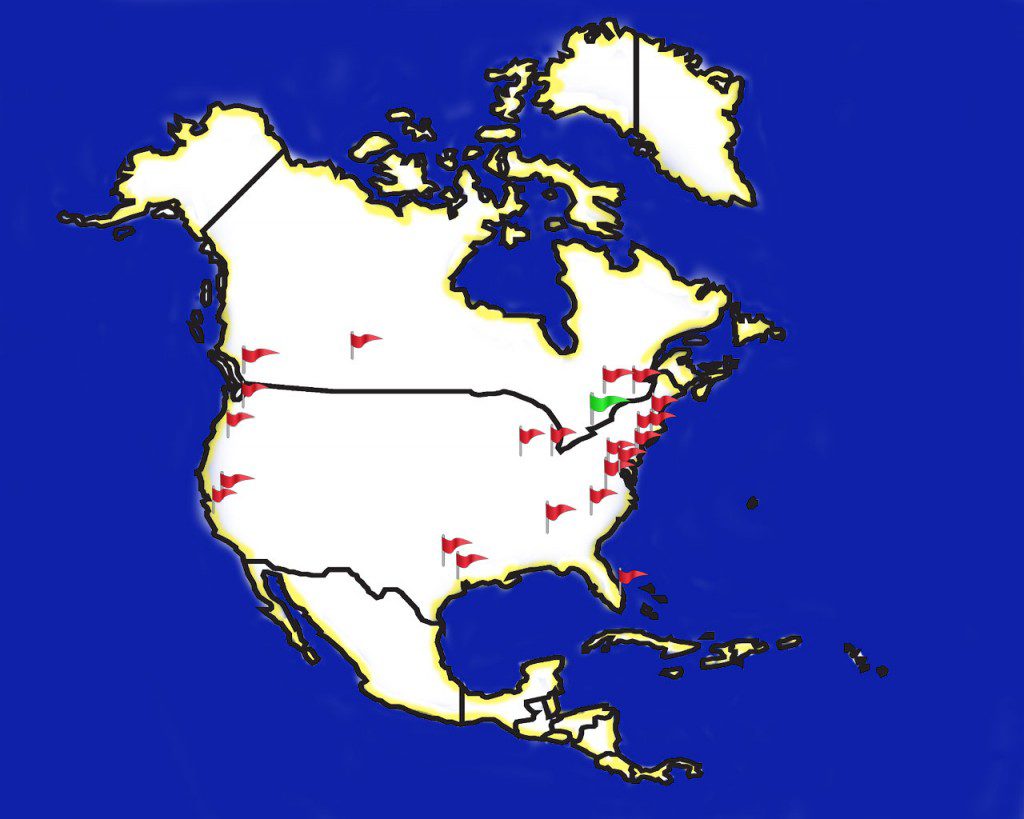By Erica Commisso
The Ottawa office of Bloomberg News is just minutes away from the Rideau Canal and Parliament buildings, directly down the street from the National War Memorial. Most days, this makes for nothing more than a pleasant view. But on October 22, 2014, Bloomberg employees were some of the first to broadcast updates from the attack on and around Parliament Hill. They provided in-depth coverage of the shooting, all while being surrounded by the mayhem that followed the gunshots.
With 150 bureaus in over 73 countries, Bloomberg produces approximately 5,000 stories every day, syndicating them to over 420 publications, including the National Post and the Toronto Star. It also operates its own website with original material, broadcasts via radio and television and publishes both weekly and monthly magazines. The Canadian team has increased by 50 percent in the last two years, with journalists located in several cities across the country.

In January 2014, former Globe and Mail editor-in-chief Edward Greenspon joined Bloomberg to be editor-at-large of the Canadian news division and continue its expansion. He told the Post that he intends to focus on increasing investigative and explanatory journalism in Canada. The original, attention-grabbing stories may set Bloomberg apart from other business news agencies and help it gain more readers.
In October 2014, Greenspon became the managing editor of the global energy, environment and commodities coverage. This announcement came after he’d co-produced a team-written exposé of conversations between Prime Minister Stephen Harper and U.S. President Barack Obama about the Keystone XL project. The article was broken up into short, easy-to-read sections, but presented a clear investigative angle and extensive research, while providing the appropriate historical context. Maclean’s political editor Paul Wells called the piece a “compelling” read and a celebration of Greenspon’s arrival at Bloomberg.
There are four pillars of coverage that appeal to the average news reader, according to David Scanlan, the news director for the company’s 30-person Canadian editorial team: celebrity, war and conflict, sports and business. While he notes that Bloomberg reports on all four, the economy and markets of major companies are still the news agency’s primary focus.
But it doesn’t have that beat to itself. Business readers have lots of options, including the Globe’s Report on Business, the Post’s Financial Post and magazines such as Canadian Business. The Star closed its subscription-based business websites in 2013, citing a lack of profits after just a year of operation. The Globe’s Tavia Grant sees business journalism becoming increasingly competitive in Canada, ultimately creating better coverage and more choices for readers. “I like that this competition isn’t just the likes of Bloomberg and financial newspapers—we also have more economics professors who are blogging and adding meaningful insight to the public debate,” she says. “But it also means we can’t, for a moment, be complacent. It’s pressuring us to produce more original content and unique insights, which is also a good thing.” Grant, who has written for the Report on Business (ROB) section since 2005 and worked at Bloomberg from 1997 to 1999, says, “Bloomberg is one of the few organizations that has been in growth mode in the past decade.”
The company’s international reach is certainly an advantage. Chris Waddell, a journalism professor at Carleton University who has worked for the Globe’s ROB and CBC News Television, says Bloomberg has become more than just an American company and its global expansion means it can report on international news in ways its Canadian competitors can’t. Before Greenspon arrived, most Bloomberg stories were short and succinct and Grant sees the move into longform and investigative journalism as another example of the company’s growth.
But it still has a lot of work to do. In a presentation to the Ryerson School of Journalism, Scanlan said, “Our goal is to be the most influential news organization in the world. It’s a lofty goal, and we’re not there yet.” He compared the Bloomberg terminal (which compiles data, news, analytics and more) to the human brain: “We use about 15 percent of Bloomberg’s potential.” The new direction is Greenspon’s attempt to expand the news agency’s brainpower.
About the author
Ryerson Journalism Student. Writer for the Spring 2015 Ryerson Review of Journalism.

Hi, Megan,
You should review your map of North and Central America that accompanies this article. You show Canada as being substantially smaller than the United States, and we are in fact quite a bit bigger. I know the residents of the U.S. like to think they are bigger than everyone else, so an accurate map might help not only to curb their arrogance, but perhaps also educate them just a bit.